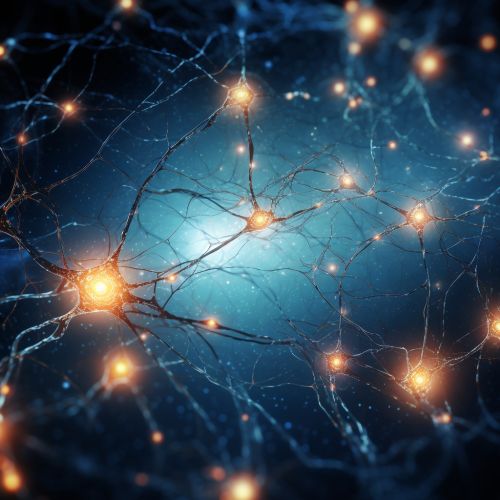Neural network (biology)
Introduction
A neural network in biology refers to a series of interconnected neurons whose activation defines a recognizable linear pathway. These networks underpin the complex functioning of various biological systems, particularly the nervous system.


Structure and Function
Neural networks are composed of neurons, the fundamental units of the nervous system. Each neuron consists of a cell body, dendrites, and an axon. The cell body contains the nucleus and cytoplasm. The dendrites extend from the cell body and receive signals from other neurons. The axon is a long process that transmits signals to other neurons.
Neurons communicate with each other through synapses. A synapse is a small gap at the end of a neuron that allows a signal to pass from one neuron to the next. Synapses are key to the formation and functioning of neural networks.
Types of Neural Networks
Neural networks can be classified into several types based on their structure and function:
1. Feedforward Neural Networks: These are the simplest type of neural network. In this network, information moves in only one direction, forward, from the input neurons, through the hidden neurons (if any) and to the output neurons.
2. Recurrent Neural Networks: These are more complex networks in which information can travel in both directions. They have a 'memory' that captures information about what has been calculated. This memory allows for temporal dynamic behavior and contextual information in sequence prediction.
3. Radial Basis Function (RBF) Neural Networks: In these networks, the distance of a point to the center is calculated. RBF networks have two layers. In the inner layer, features are combined with the radial basis function in the input space. In the outer layer, output is taken from the features of all the classes.
4. Modular Neural Networks: These are complex systems formed by a combination of different neural networks, each one making a sub-task.
Neural Network Models
There are various models of neural networks, each with its own unique characteristics and applications. Some of the most common models include:
1. Perceptron Model: This is one of the simplest types of artificial neural networks. It is a linear classifier, i.e., a classification algorithm that makes its predictions based on a linear predictor function.
2. Multilayer Perceptron Model: This is a type of feedforward artificial neural network model that maps sets of input data onto a set of appropriate outputs.
3. Hopfield Network Model: This is a type of recurrent artificial neural network popularized by John Hopfield. Hopfield nets serve as content-addressable memory systems with binary threshold nodes.
Applications
Neural networks have a wide range of applications in various fields of biology. Some of the key applications include:
1. Neuroscience: Neural networks play a crucial role in the study of the brain and nervous system. They are used to model brain functions and understand neurological disorders.
2. Genomics: In genomics, neural networks are used for gene finding and sequence prediction, among other things.
3. Proteomics: Neural networks are used in proteomics for protein structure prediction and protein-protein interaction prediction.
4. Bioinformatics: Neural networks are used in bioinformatics for sequence analysis, gene prediction, phylogenetic analysis, and other applications.
